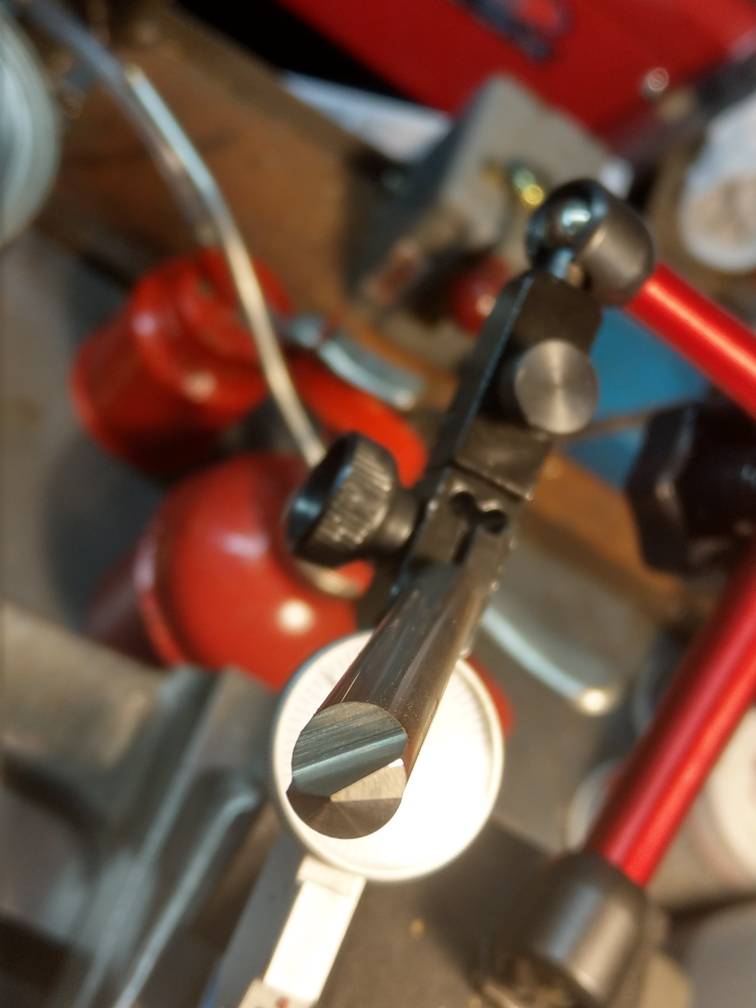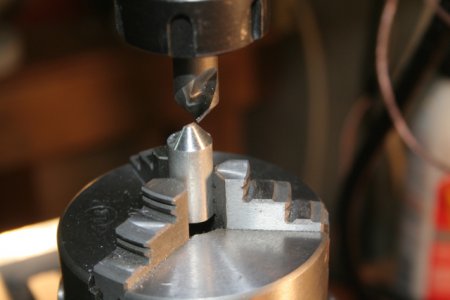- Joined
- Jul 28, 2017
- Messages
- 2,367
I am working on an improvement for my cheap Craftsman table saw that uses a length of U-shaped aluminum extrusion that is attached to the left edge of the table. It is to add an additional guide for a sled. To attach it I want to use flat head screws that are counter-sunk so they are flush with the side of the extrusion. My plan is to drill all the way through the sides of the U so I can feed the countersink (and eventually a screwdriver) through the outer hole (which will be enlarged to accommodate the counter sink). The problem is that all the countersinks I've got are shorter than the width of the channel; and they also are pretty large in diameter (although the length is the most significan issue). So I'm looking at making my own countersink out of some 1/2" O1 drill rod.
My plan is to turn the drill rod down to clear the outer hole and then cut a cone on the end with the right angle. The business end of the CS will be a little larger in diameter than the head of the screw. Then put the countersink-to-be on my horizontally-mounted rotary table and mill a flat down to the point of the cone. This will only give me a neutral rake so I will rotate the workpiece 10-15 degrees and again mill down, but just down to the cutting edge. I believe this will give me some decent positive rake while leaving the cutting edge in line with the center of the bit. I will harden the tool and hone it afterwords -- I only have a air-propane torch but this part is small enough I figure I can heat the business end up enough to harden it.
I haven't done this before so I'm wondering if I missed anything, or if my idea on how to get some positive rake is faulty.
My plan is to turn the drill rod down to clear the outer hole and then cut a cone on the end with the right angle. The business end of the CS will be a little larger in diameter than the head of the screw. Then put the countersink-to-be on my horizontally-mounted rotary table and mill a flat down to the point of the cone. This will only give me a neutral rake so I will rotate the workpiece 10-15 degrees and again mill down, but just down to the cutting edge. I believe this will give me some decent positive rake while leaving the cutting edge in line with the center of the bit. I will harden the tool and hone it afterwords -- I only have a air-propane torch but this part is small enough I figure I can heat the business end up enough to harden it.
I haven't done this before so I'm wondering if I missed anything, or if my idea on how to get some positive rake is faulty.




